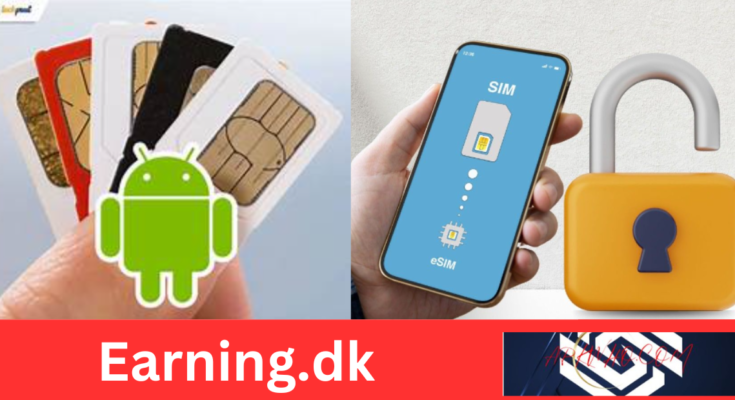Table of Contents
Toggle“How to Access and Manage Your SIM Details: A Comprehensive Guide”
Table of Contents
1. Introduction
– Importance of Knowing Your SIM Details
– Overview of the Process
2. What Are SIM Details?
– Understanding SIM Details and Their Components
– Why SIM Details Matter
– How SIM Details Are Stored and Managed
3. How to Access Your SIM Details
– Using Your Mobile Phone to Check SIM Details
– Accessing SIM Details via Mobile Network Providers
– Online Methods for Checking SIM Details
4. Managing Your SIM Details
– Updating Personal Information Linked to Your SIM
– Transferring SIM Ownership
– Deactivating or Blocking SIMs You No Longer Use
5. Protecting Your SIM Details
– Importance of Securing Your SIM Details
– Tips for Keeping Your SIM Details Safe
– What to Do if Your SIM Details Are Compromised
6. Understanding the Role of SIM Details in Mobile Security
– How SIM Details Are Used for Authentication
– The Connection Between SIM Details and Mobile Banking
– SIM Swapping: Risks and Prevention
7. Frequently Asked Questions About SIM Details
– Common Concerns and Clarifications
8. Conclusion
– Final Thoughts on Managing Your SIM Details
Introduction
In today’s interconnected world, your mobile phone is more than just a communication device—it’s a gateway to your personal and professional life. At the heart of this device is your SIM card, a small yet powerful component that stores crucial information about your mobile network and personal identity. Knowing how to access and manage your SIM details is essential for ensuring the security and functionality of your mobile services.
In this guide, we’ll walk you through everything you need to know about SIM details, from understanding what they are to how to access, manage, and protect them. Whether you’re a seasoned mobile user or new to the world of SIM cards, this comprehensive guide will provide you with the knowledge you need to keep your SIM details safe and up-to-date.
What Are SIM Details?
Understanding SIM Details and Their Components
SIM details refer to the specific information stored on your SIM card, which allows you to connect to your mobile network and access services such as calls, texts, and data. These details include your unique SIM card number (ICCID), International Mobile Subscriber Identity (IMSI), mobile phone number (MSISDN), and network authentication keys. Together, these elements ensure that your device can communicate with the mobile network and that you can be identified as the rightful user of the associated phone number.
Why SIM Details Matter
SIM details are crucial because they tie your mobile phone to your identity and network services. Without accurate SIM details, you wouldn’t be able to make calls, send texts, or use mobile data. Moreover, SIM details play a significant role in mobile security, as they are often used for two-factor authentication (2FA) and other security measures.
Having accurate and up-to-date SIM details ensures that you can seamlessly use your mobile services and protects you from potential security risks, such as SIM swapping or unauthorized access to your mobile account.
How SIM Details Are Stored and Managed
SIM details are stored on the SIM card itself, a small chip that is inserted into your mobile phone. These details are managed by your mobile network provider, who assigns and updates your SIM information as needed. In most cases, you can view and manage your SIM details directly from your mobile device or by contacting your network provider.
How to Access Your SIM Details
Using Your Mobile Phone to Check SIM Details
One of the simplest ways to access your SIM details is directly from your mobile phone. Most smartphones allow you to view basic SIM details, such as your phone number and network operator, within the settings menu.
To check your SIM details on an Android device:
1. Open the “Settings” app on your phone.
2. Scroll down and select “About phone” or “About device.”
3. Tap on “Status” or “SIM status.”
4. Here, you can view your phone number, network operator, and other relevant SIM details.
On an iPhone, you can find your SIM details by:
1. Opening the “Settings” app.
2. Selecting “General.”
3. Tapping on “About.”
4. Scrolling down to view your ICCID, which is your SIM card number.
These methods provide quick access to essential SIM details without the need for external tools or services.
#### Accessing SIM Details via Mobile Network Providers
If you need more detailed information about your SIM card, such as your IMSI or PIN/PUK codes, you may need to contact your mobile network provider. Most providers offer customer support services that can help you retrieve and manage your SIM details.
You can usually access your SIM details through:
1. **Customer Service:** Call your network provider’s customer service hotline and request your SIM details. Be prepared to verify your identity by providing your CNIC number or answering security questions.
2. **Online Accounts:** Many network providers offer online portals where you can log in to your account and view your SIM details. This method is convenient for accessing information like your plan details, usage history, and account status.
These services ensure that you have all the necessary information to manage your SIM card effectively.
#### Online Methods for Checking SIM Details
Several online tools and apps can help you check your SIM details without needing to contact your network provider directly. These tools are often provided by third-party developers or mobile network operators and are designed to make it easy for you to access your SIM information.
Some popular online methods include:
1. **Mobile Network Apps:** Most major network providers have dedicated apps that allow you to view and manage your SIM details. These apps often include features such as bill payment, usage tracking, and SIM management.
2. **SIM Information Websites:** There are websites that provide SIM information services, allowing you to check your SIM details by entering your phone number or ICCID. Always use reputable sites to avoid sharing sensitive information with untrustworthy sources.
Using these methods, you can easily access detailed information about your SIM card, helping you stay informed and in control of your mobile services.
—
### **Managing Your SIM Details**
#### Updating Personal Information Linked to Your SIM
It’s important to keep your personal information up-to-date to ensure that your SIM details are accurate and reflect your current situation. If you change your address, name, or other personal details, you should update this information with your network provider to avoid any discrepancies.
To update your personal information:
1. Visit your mobile network provider’s service center with your CNIC and any relevant documents.
2. Request an update to your SIM details, providing the necessary documentation to support the changes.
3. Your network provider will process the update, ensuring that your SIM details are current and correct.
Keeping your information accurate helps prevent issues such as missed bills, service disruptions, or complications with identity verification.
#### Transferring SIM Ownership
If you need to transfer your SIM card to another person, you must complete a formal ownership transfer process. This ensures that the new owner is recognized by the network provider and that the SIM details are updated accordingly.
To transfer SIM ownership:
1. Both the current owner and the new owner should visit a mobile network service center together.
2. Provide your CNICs and complete the required biometric verification.
3. The network provider will update the SIM details to reflect the new ownership.
This process is essential for maintaining accurate records and ensuring that the SIM card is linked to the correct individual.
#### Deactivating or Blocking SIMs You No Longer Use
If you have SIM cards that you no longer use, it’s a good idea to deactivate or block them to prevent unauthorized use. Unused SIMs can be a security risk if they fall into the wrong hands, so it’s important to manage them responsibly.
To deactivate or block a SIM:
1. Contact your mobile network provider and request the deactivation or blocking of the specific SIM.
2. Provide the necessary verification, such as your CNIC or the SIM card number.
3. Your network provider will process the request, ensuring that the SIM is no longer active.
By deactivating unused SIMs, you reduce the risk of unauthorized access to your mobile services and protect your personal information.
—
### **Protecting Your SIM Details**
#### Importance of Securing Your SIM Details
Your SIM details are a critical part of your mobile security, and protecting them should be a priority. Unauthorized access to your SIM details can lead to identity theft, financial loss, and other serious issues. By taking steps to secure your SIM information, you can safeguard your digital identity and ensure that your mobile services remain secure.
#### Tips for Keeping Your SIM Details Safe
To keep your SIM details secure, consider the following tips:
1. **Use a Strong PIN:** Set a strong PIN for your SIM card to prevent unauthorized access. Avoid using easily guessable numbers, such as your birthdate or repeated digits.
2. **Enable SIM Lock:** Most smartphones allow you to enable a SIM lock, which requires your PIN to be entered each time your phone is restarted or the SIM card is inserted into a new device.
3. **Avoid Sharing Your SIM Details:** Be cautious about sharing your SIM card number, ICCID, or other details with anyone. Only provide this information to trusted sources, such as your network provider.
By following these tips, you can enhance the security of your SIM details and reduce the risk of unauthorized access.
What to Do if Your SIM Details Are Compromised
If you suspect that your SIM details have been compromised, it’s important to act quickly to protect your information. Here’s what you should do:
1. **Contact Your Network Provider:** Report the issue to your mobile network provider immediately. They can help you block the compromised SIM and issue a replacement.
2. **Monitor Your Accounts:** Keep an eye on your mobile accounts and other related



